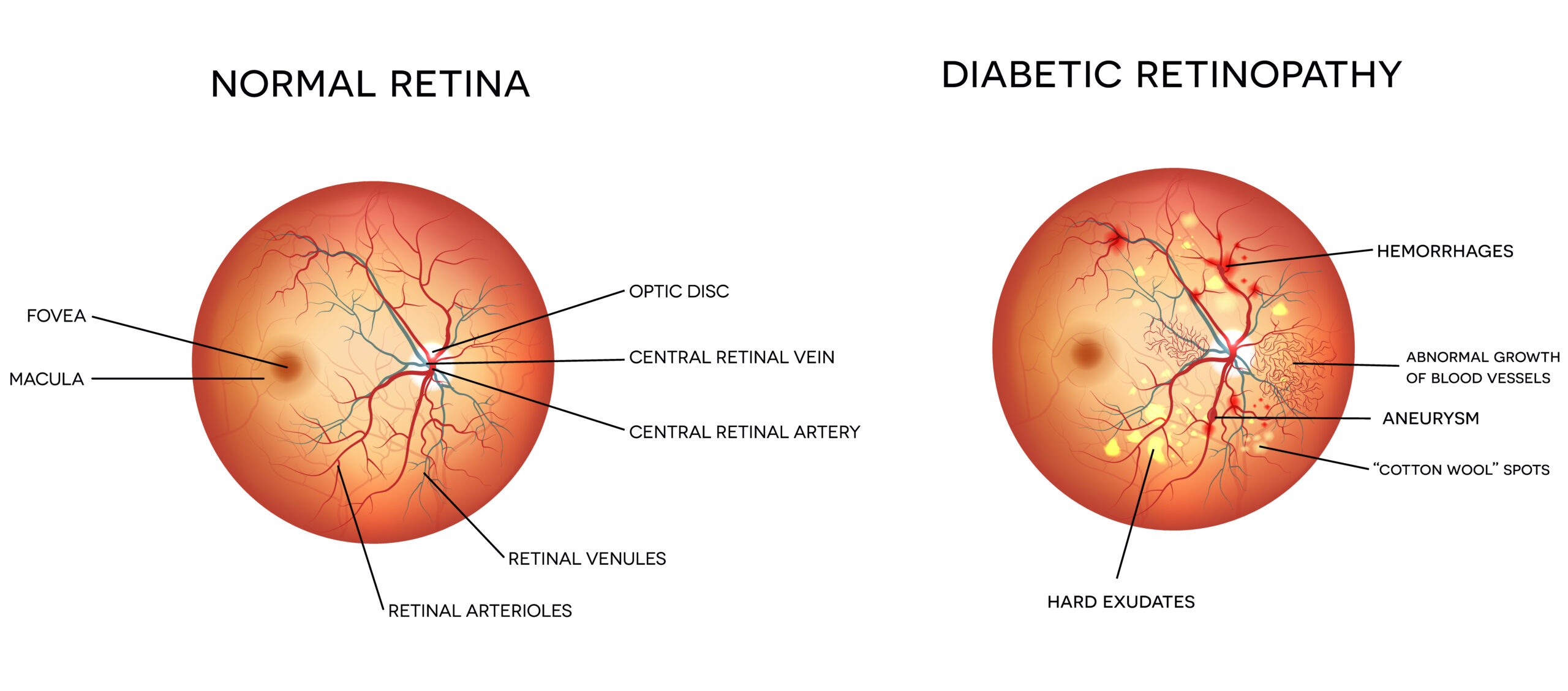
Approximately 10.3 million Americans have diabetes. More than half of these individuals are at risk for vision loss and other health problems because they don’t know they have the disease. Diabetic eye disease, a group of eye problems that affect those with diabetes, includes diabetic retinopathy, cataracts, and glaucoma. The most common of these is diabetic retinopathy, which affects 5.3 million Americans age eighteen and older.

Diabetic retinopathy is a potentially vision-threatening condition in which the blood vessels inside the retina become damaged from high blood sugar levels associated with diabetes. This leads to leakage of fluids into the retina and the obstruction of blood flow. Both may result in vision loss.
More than one-third of those diagnosed with diabetes do not receive recommended vision care and may be at risk for blindness. Because there are often no symptoms in the early stages of diabetic retinopathy, your vision may not be affected until the disease becomes severe.
Once diagnosed with diabetes, schedule a complete dilated eye examination with your ophthalmologist at least once a year. Make an appointment promptly if you experience blurred vision and floaters that: affect only one eye, last more than a few days and are not associated with a change in blood sugar. In advanced cases of diabetic retinopathy, laser treatment has been shown to reduce the loss of vision. This surgery does not cure diabetic retinopathy, nor does it prevent future vision loss, especially if diabetes or blood pressure is not well controlled.
Diabetes can also affect your vision by causing cataracts and glaucoma. If you have diabetes, you may get cataracts at a younger age, and your chances of developing glaucoma are doubled. Early diagnosis of diabetes and effective control of blood sugar and hypertension through diet, exercise, and medication can help to reduce your risk of developing eye diseases associated with diabetes.
For more information on diabetes and the eye, please visit ImproveYourVision.com.